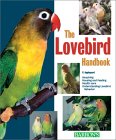Rose-Breasted Cockatoo
 Galah or Rose-Breasted Cockatoo
Galah or Rose-Breasted Cockatoo
The cockatoo family comprises a large group of parrots from the continent of Australia. Species commonly kept as pets range in size from the small Goffin’s to the large Mollucan or Salmon-crested cockatoo. The appearance of the various cockatoos varies dramatically, from the all-white Goffin’s to the striking Black Palm with the splash of red between the eye and beak. One of my favorite cockatoo species is the rose-breasted cockatoo, also known as the Galah cockatoo. I remember the first time I handled one of these birds. I was astounded at how soft its lovely light grey and pink feathering was. Although the rose-breasted ‘too belongs to the genus Eolophus, this genus is very similar to the genus Cacatua, the one most associated with the common term “cockatoo.”
The rose-breasted cockatoo is a bit larger than the Goffins, usually around 12 inches in length. They have the typical crest on the top of the head that they fluff up when excited, although it is denser than on many cockatoo species.
Diet is an important consideration for all cockatoo species. Just like cockatiels and budgerigars, also Australian species, they are prone to fatty tumors and therefore need to be on a well-balanced diet that is not too high in fat. It is best to limit their intake of such fatty seeds as sunflower, although you can give them on occasion as a treat. It’s important to get these birds to eat vegetables and grains so they do not overeat seeds.
Most cockatoo species love to chew. Therefore, take this into consideration when buying toys. Make sure they have plenty of wood to chew on, and don’t let your furniture become their chew toy of choice.
Another thing to keep in mind when choosing any cockatoo as a pet is the fact that these species produce a powder they use to clean their feathers, just like cockatiels. People who tend to be allergic to animals may very well find this powder irritating. Many parrot species do not produce this powder, and a person who tends to have allergies would do best to consider something other than a cockatoo as a pet.
In the wild these parrots nest in the hollows of trees. They are, unfortunately, often killed as pests in Australia by farmers who don’t want them to raid their crops. While they are not considered particularly endangered in Australia at this time, they are not as easy to find as pets as are many other cockatoo species. They tend to be quite expensive and they require a very large cage to get sufficient exercise, another way to keep down weight and avoid fatty tumors. As pets, rose-breasted cockatoos can learn to mimic, but they are not known to be great talkers. Properly socialized, hand-fed babies can be very gentle and sweet. If not handled regularly, they can become quite timid. Like all parrots, they are flock creatures by nature, and need to be in a central part of the home where they can interact with their human family.









